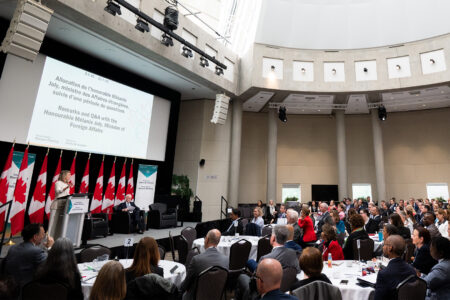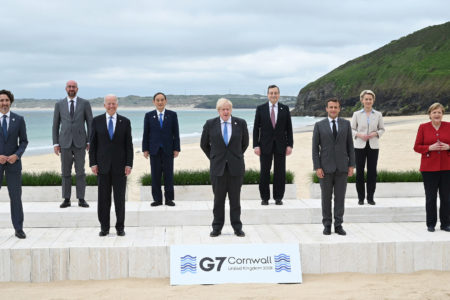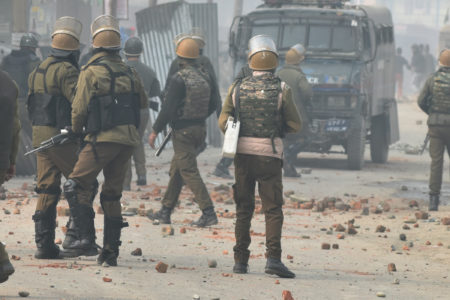
When the Japanese forces occupying Korea were defeated at the end of the Second World War, the Soviets and the Americans divided the peninsula into North Korea and South Korea. This partition is still a source of deep resentment, and many Koreans aspire to reunification. However, for many South Koreans at least, it might be time to consider alternatives.
The era of North Koreans digging tunnels to invade the South is over. The North has been weakened by years of economic neglect since the collapse of the Soviet Union. China is now its largest trade partner. North Korea’s economy is dwindling, and its dynastic regime is currently more preoccupied with its survival than with invading the South.
On a recent visit to South Korea, I found a growing recognition that irreconcilable political differences would render reunification unrealistic. Moreover, after drifting apart in isolation for more than 70 years, North and South Korea probably now have quite incompatible cultures, especially since South Korea has evolved into a more Western society.
The harsh realities of potential reunification are not only a Korean preoccupation: China would not welcome a Western-style democracy at its doorstep, and the United States would frown upon Chinese influence over the entire Korean peninsula. The collapse of the Soviet Union provided a unique political opening for German reunification, but China, an ambitious emerging power, is unlikely to offer Koreans a similar opportunity anytime soon. China has absorbed the lessons of the fall of the Berlin Wall and the subsequent enlargement of NATO into Eastern Europe — a sequence of events that still haunts Russian President Vladimir Putin today. In short, the window for Korean reunification, if it ever was open, is now, in all likelihood, definitively shut.
Political relations between the North and the South have been getting worse. The Sunshine Policy of dialogue and conciliation, adopted in 1998 and pursued by South Korean Presidents Kim Dae-jung and Roh Moo-hyun to encourage North Korea to open its doors, was abandoned in 2008. Although Kim Jong-un, the North Korean leader, may appear erratic and unpredictable to Westerners, he may actually be hyper-rational. According to some of my Korean hosts, Kim is simply applying with impressive discipline the tried-and-true mutual assured destruction strategy used by the Soviets and the Americans during the Cold War.
The North has acquired nuclear weapons capable of reaching the United States not in order to use them but rather to deter. Kim’s objective is to avoid the fate of regimes like that of Saddam Hussein’s in Iraq and Moammar Gadhafi’s in Libya. The fear of an American-led invasion, well founded or not, is deeply ingrained in the mentality of the North Korean leadership.
The series of North Korean weapons tests and missile launches this year have been a show of force, first and foremost meant for a domestic audience, to create an impression of strength and to maintain distrust of ill-intentioned Americans and South Koreans. But the seemingly childish and senseless behaviour of the dictator is also intended to persuade his external adversaries that there is a non-zero probability that he may actually use his nuclear arsenal, regardless of the consequences — a rational tactic to avoid a conflict. And the fear of losing the support of China, which is being pressured by the Americans to step up sanctions, only reinforces the logic of the behaviour.
So the worry about an invasion and a lack of trust of the outside world best explain the North Korean leader’s current theatrics. Yet this is not very reassuring. As US Senator John McCain pointed out earlier this year, the danger is that the situation may escalate into an episode like the Cuban Missile Crisis of 1962, when the world came to the brink of a nuclear conflict.
Neither can we count on the instability of the North Korean regime to lessen the threat in the short term. Sanctions might help but are likely to be insufficient. Deference to authority and respect for elders are values strongly embedded in the North Korean psyche. Moreover, North Koreans are at best reserved toward Western culture, which they believe has engulfed their Southern neighbours. These cultural considerations surely contribute to reinforcing the stability of the Pyongyang regime.
Aiming for passive reconciliation, rather than reunification, might thus be the best way to avoid an escalation of the current crisis. A viable political option to assuage fears of conflict on both sides would be for South Korea and its allies to recognize North Korea’s permanent sovereignty, with reciprocal recognition of South Korea from the North and from China. Such assurances could go a long way to calm both North Koreans and Chinese as well as to gradually reduce geopolitical and military tensions in the region.
South Korea’s new president, Moon Jae-in, has been known to favour re-establishing a dialogue with the North. Unsuccessful so far, he has hardened his formerly conciliatory position. However, if Moon were to try pushing the conversation further by suggesting that the peninsula officially adopt a “two-state solution,” the North Korean regime, feeling more confident about its future, might start listening. This confidence, in its turn, could gradually build the required trust that might allow North Korea to eventually develop into an economy along the lines of China’s.
But such developments will take time. North Korea will probably achieve its nuclear objectives before then. Moreover, the mobile missile-defence system known as THAAD (for Terminal High Altitude Area Defense), recently installed in South Korea by the US, is not guaranteed to stop all North Korean missiles.
Robert Gates, defence secretary under both Barack Obama and George W. Bush, recently proposed a similar strategy that would have Washington recognize North Korea and abandon the idea of regime change. This peace agreement would be combined with conditions that would limit, not dismantle, North Korea’s nuclear program. Gates acknowledges that “you cannot get the North to give up their nuclear weapons” entirely, as “Kim sees them as vital to survival.”
If the Chinese, key participants in achieving a workable solution, refuse to get on board, the Gates plan calls for the US to “heavily populate Asia with missile defenses” to motivate them. Such a costly and counterproductive military buildup in the region is precisely what China wants to avoid, so the prospect of it should be persuasive.
Removing Kim Jong-un and the nuclear menace by military means does not seem to be the optimal option, as the threats of reprisal from the North Koreans escalate — and the Chinese could join in those threats. Wouldn’t it be better for all parties to try building a path toward peaceful coexistence? With realism rather than ideology, it is possible.
Photo: Turin, Italy – May 1, 2017: Puppets of Kim Jong-un and Donald Trump with missiles, Pacifists against the danger of a war between USA and North Korea, in the parade on May 1. Shutterstock, by MikeDotta.
Do you have something to say about the article you just read? Be part of the Policy Options discussion, and send in your own submission. Here is a link on how to do it. | Souhaitez-vous réagir à cet article ? Joignez-vous aux débats d’Options politiques et soumettez-nous votre texte en suivant ces directives.








